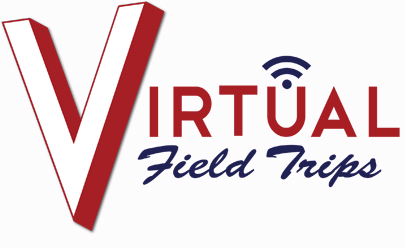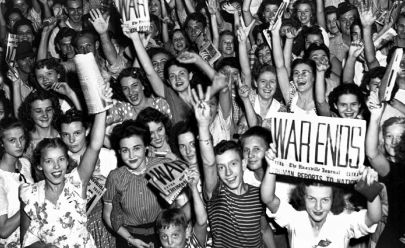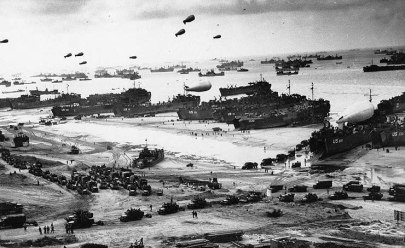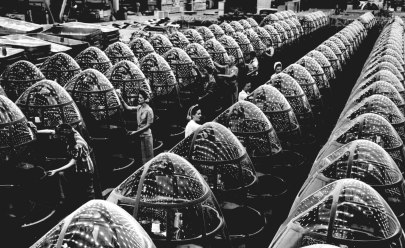VIRTUAL FIELD TRIPS:
Virtual Field Trips
 The National WWII Museum offers the following interactive, fast-paced “Virtual Field Trips” that are videoconferenced LIVE into classrooms across the country. Guided by a museum educator, students analyze maps, photographs, artifacts, posters, speeches, and songs as they explore the chronologies, strategies, motivations, and outcomes behind these fascinating chapters of WWII history.
The National WWII Museum offers the following interactive, fast-paced “Virtual Field Trips” that are videoconferenced LIVE into classrooms across the country. Guided by a museum educator, students analyze maps, photographs, artifacts, posters, speeches, and songs as they explore the chronologies, strategies, motivations, and outcomes behind these fascinating chapters of WWII history.
All videoconferences last one class period and include pre- and post-program curriculum materials.
Program Descriptions:
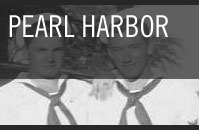 A Day of Infamy: The Japanese Attack on Pearl Harbor
A Day of Infamy: The Japanese Attack on Pearl HarborIn the war that changed the world it was the day that changed the war—a “Day of Infamy.” That day brought the United States into WWII, adding the strength and determination of the American people to the Allied arsenal as it struggled to defeat the Axis. Students explore Japanese and American motivations and actions through animated maps and both Japanese and American primary sources.
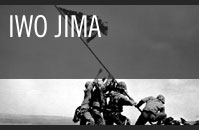 Iwo Jima and the War in the Pacific
Iwo Jima and the War in the PacificStudents learn about the vastness of the Pacific Theater by exploring its geography. They “read” a Navy “Shellback” certificate and participate in an Equator-crossing initiation. Next they survey the Island Hopping campaign using maps and viewing video of oral histories. This leads up to the invasion of Iwo Jima. Here they explore the campaign and analyze the photograph of the flag-raising on Mt. Suribachi. Students learn to personalize history by exploring a set of artifacts from one Marine who fought there.
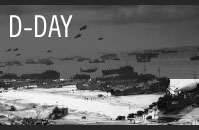 D-Day: The Turning Point of the War in Europe
D-Day: The Turning Point of the War in EuropeStudents receive background on Operation Overlord through maps and audio-visual presentations, explore a “Bigot” map of Omaha Beach to learn about the challenges of planning and executing Operation Overlord, make decisions about where and when D-Day should be launched, and “read” a D-Day artifact to learn about using objects to tell stories. D-Day: what a difference a day makes!
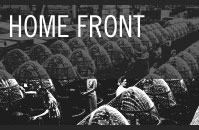 Don't You Know There's A War On?! The Home Front during WWII
Don't You Know There's A War On?! The Home Front during WWIIStudents explore rationing, scrapping, War Bonds, and war production through the eyes of students. Together they find answers more satisfying than the wartime standard: “Don't You Know There's A War On?” Primary sources viewed include wartime newsreels, high school yearbooks, posters, photographs, and songs.
Now with two options: Book either the Upper Elementary/Middle School OR High School level program
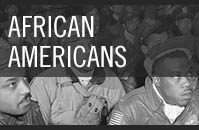 Double Victory: African Americans in WWII
Double Victory: African Americans in WWIIStudents learn about the triumphs and challenges experienced by African Americans on the battle fronts and on the Home Front. They meet Pearl Harbor hero Dorie Miller, the Montford Point Marines, the Tuskegee Airmen, and the seven African American Medal of Honor recipients.
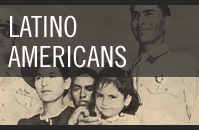 Los Veteranos: Latinos in WWII
Los Veteranos: Latinos in WWIIAn important part of U.S. history long before WWII, the war gave Latinos new opportunities and presented them with new challenges. Because Latinos did not serve in segregated units, as African Americans did, their WWII history is sometimes overlooked. Was that history unique, and if so, how? Students learn about Latino WWII heroes and average soldiers, as well as issues of ethnicity and acculturation on the Home Front.
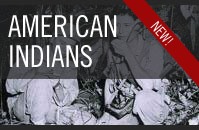 The Warrior Tradition: American Indians in WWII
The Warrior Tradition: American Indians in WWIIIn addition to the most famous group of American Indians, the Navajo Code Talkers, uncover surprising and lesser-known stories of these warriors in uniform. Hear segments from the Museum’s oral history collection, including Medal of Honor recipient Van Barfoot,and the last surviving Crow war chief Joe Medicine Crow. With a focus on language and symbols, explore how the Code Talkers used their once-suppressed languages to successfully transmit code on the battlefront, attempt to crack the "unbreakable" Navajo code, and discuss why native language and terminology are still relevant today.
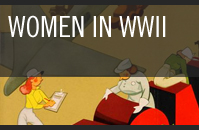 It’s OUR War, Too! Women in WWII
It’s OUR War, Too! Women in WWIIWhen Americans were called to action, women “did their part” despite stereotyping and discrimination. The war spurred many women to enter the workforce for the first time, all while managing a household alone and upholding wartime duties. Women answered the call of Uncle Sam and enlisted in military auxiliary groups, fulfilling critical roles stateside and abroad. Hear accounts from real Rosie the Riveters and women near the battle fronts. Visit the Hollywood Stage Door Canteen and discover how starlets, singers and celebrities lifted the spirits of our troops. Learn about the lasting legacy of women’s contribution to the war effort.
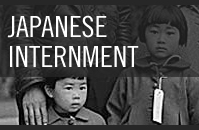 I AM an American! Japanese American Internment in WWII
I AM an American! Japanese American Internment in WWIIStudents explore the story of Eva Hashiguchi, who spent her high-school days as an internee in Jerome, Arkansas. Through her account, witness how wartime hysteria and racial prejudice led to one of the darkest chapters of American history. Examine the country’s actions to apologize for the injustices committed against Japanese Americans. Hear about the struggles and tremendous accomplishments of the Purple Heart Battalion.
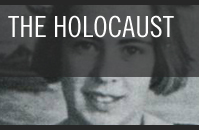 The Holocaust: One Teen’s Story of Persecution and Survival
The Holocaust: One Teen’s Story of Persecution and SurvivalHear personal testimony from Eva Schloss, stepsister of Anne Frank and survivor of Auschwitz. Through video recorded selections of Eva's story from the Museum's oral history collection, students will encounter the physical and emotional ordeal of going into hiding, being captured by the SS and sent to the largest concentration camp in the Third Reich. Students will understand the necessity of exploring this topic even as we approach 70 years after the war's end.
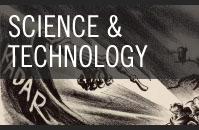 The War that Changed Your World: Science & Technology in WWII
The War that Changed Your World: Science & Technology in WWIIToday’s televisions, computers, and cell phones can all trace their origins to technological advancements realized during WWII. Students learn about radar, rockets, jets, penicillin, blood plasma, computers, and the atomic bomb; and how these inventions continue to affect their lives today.
 Virtual Victory Garden
Virtual Victory GardenCommunity, school, and home gardening and the recent local and slow food initiatives all have roots in the Victory Garden movement of WWII. Students play a fun and exciting game where they discover how to grow a successful garden. During the game, students compete in ten activities related to the WWII Home Front, nutrition, healthy food choices, and community building. The program reinforces the values and skills that won the war, including teamwork, optimism, social action, and hard work.
 Choosing and Using Primary Sources with WWII High School Yearbooks
Choosing and Using Primary Sources with WWII High School YearbooksProvide your students with an introduction or reinforcement of the basics of historical research with this primary source program, perfect for any time in the school year. Students will learn how to find and analyze primary sources by exploring and practicing with the Museum’s collection of 1940s high school yearbooks from across the country. The program will emphasize tools for navigating digital resources and helpful tips for web research, setting your students on the path of success for application in and out of the classroom.
Who can participate?
You must be able to videoconference through IP (Internet Protocol) and have the ability to print out and photocopy documents from the Museum’s website. All programs include pre- and post-program curriculum materials.
But what if my school does not have videoconferencing equipment?
No problem! Videoconferencing equipment is not required to experience a Virtual Field Trip. The Museum can present any of the programs above via webinar software. All you need is a computer with internet access, a projector or interactive white board and external speakers. Contact the Virtual Classroom Coordinator for further details.
Program Length:
Approximately one hour (but if you have more time, we can do more).
Cost:
$100 per videoconference. Volume discounts available.
Number of Students:
These programs are designed to be experienced by one class of students at a time. That way each student has more opportunity to participate. Larger groups can be accommodated.
How to Book
To schedule a Virtual Field Trip, register here. The Virtual Classroom Coordinator will contact you to confirm your date and time.
TAKE ACTION:


EDUCATION PROJECTS:
Student Travel – WWII Educational Tours
High school and college students, learn the leadership principles that helped win WWII on a trip to France or during a weeklong residential program in New Orleans. College credit is available, and space is limited.
See You Next Year! HS Yearbooks from WWII
Collected from across the United States, the words and pictures of these yearbooks present a new opportunity to experience the many challenges, setbacks and triumphs of the war through the eyes of America’s youth.
The Victory Gardens of WWII
Visit the Classroom Victory Garden Project website to learn about food production during WWII, find lesson plans and activities for elementary students, get tips for starting your own garden and try out simple Victory Garden recipes!
The Science and Technology of WWII
Visit our new interactive website to learn about wartime technical and scientific advances that forever changed our world. Incorporates STEM principles to use in the classroom.
Kids Corner: Fun and Games!
Make your own propaganda posters, test your memory, solve puzzles and more! Learn about World War II and have fun at the same time.


